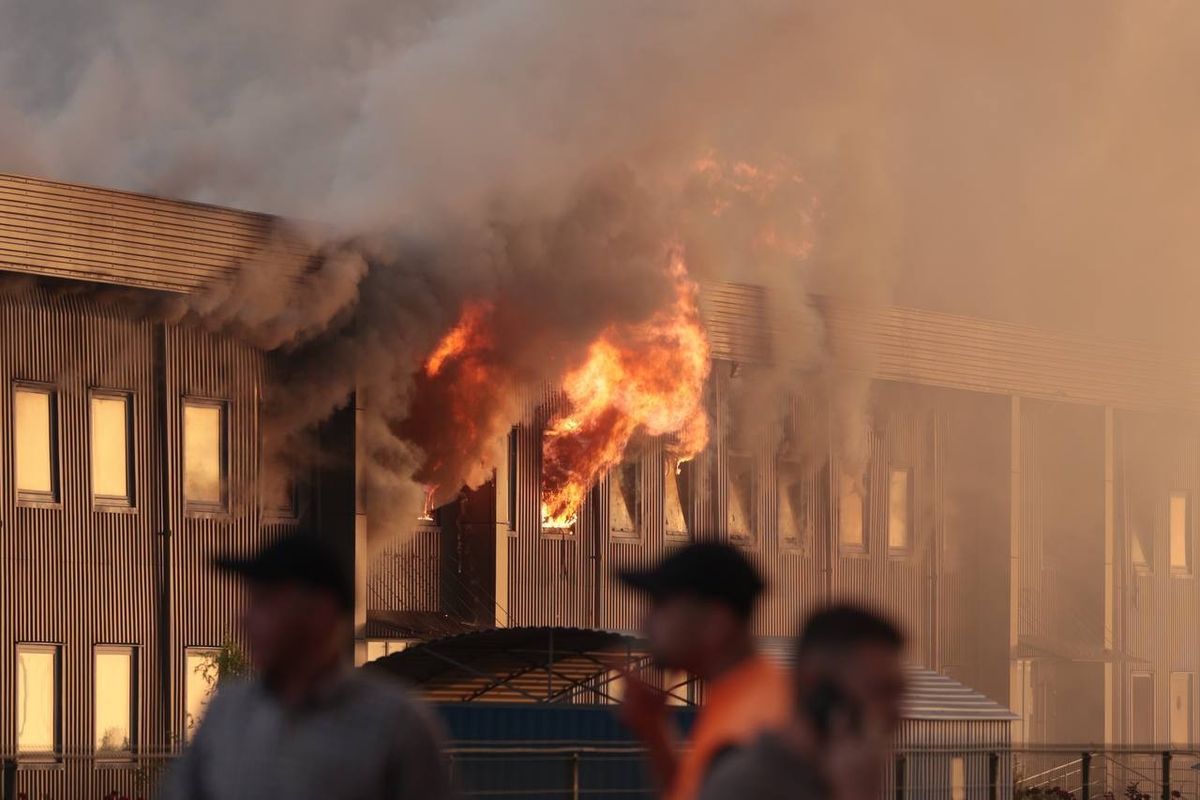Unmanned Surface Vehicles (USVs) have the potential to be just as revolutionary as the Unmanned Aerial Vehicles (UAVs) that preceded them. The Cipher Brief spoke to Brad Pilsl, an Unmanned Systems Strategic Lead with Booz Allen Hamilton, about the development and possible uses for USVs. According to Pilsl, the market for USVs will be one of the fastest growing parts of the market for unmanned systems – and their usefulness will only increase as their autonomy improves.
The Cipher Brief: What are the primary applications of USVs? What benefits do they provide over manned watercraft?
Brad Pilsl: USVs will fill military, civil, and commercial roles and missions and, like Unmanned Aerial Vehicles (UAVs), are particularly suited for “dull, dirty, and dangerous” missions. USVs have the advantage of staying on station or patrolling a given area for a very long time in potentially rough seas – without fatiguing or changing crews. Designed correctly, USVs are also capable of performance envelopes (speed, maneuvering, etc.) that can greatly exceed and overwhelm manned vessels.
Compared with manned watercraft, USVs can also be designed with reduced size, weight, and power requirements, allowing the minimum necessary to effectively carry out missions – thus you can reduce cost per unit and open up new designs that allow for very low profiles in the water and can take advantage of the properties of the ocean for energy conservation and propulsion. USVs can keep personnel and high-value units farther away from the fight and are already performing armed patrols, such as the Protector Class USV. USVs are very well suited to military roles in long-term surveillance, maritime domain awareness, anti-submarine warfare (at least in the initial detection and tracking phases in the near future), coastal patrol, and port/harbor security to mention a just a few of the missions.
TCB: What are the main challenges with using USVs, and how can those challenges be overcome?
BP: I would begin with requirements, because as I talk to stakeholders and clients in the military, they cite a lack of robust USV requirements that would help military development of USVs. USVs that are affordable, scalable, and flexible enough to go with sailors on deployment have not yet been brought to the Fleet. This is necessary to allow the operators to understand the “art of the possible,” and thereby inform acquisition requirements. I think this is especially critical in a funding-restricted environment. The Navy’s increased emphasis on experimentation also definitely helps.
The Office of Naval Research (ONR), Defense Advanced Research Programs Agency (DARPA), and the Naval Post-Graduate School (NPS) are a few of the organizations making advancements – along with industry - in making unmanned systems more autonomous. Their work in autonomous algorithms to support swarms of USVs, as well as in solving challenges in adhering to the International Regulations for Preventing Collisions at Sea (COLREGS) will do much to accelerate the ability of USVs to operate in military, civil, and commercial use cases. Likewise, greater autonomy will somewhat reduce the need for greater communications bandwidth for control of the USV (especially in a swarm), but as we have seen with the huge increase in UAVs, more sensors equals more bandwidth. However, I do think the concern over the COLREGS may be limited to the peacetime roles of USVs – where most current USV platforms are designed to operate.
TCB: Do you expect USV technology to experience a rapid growth in popularity outside the military, as was the case with UAVs? Why or why not?
BP: Yes, I definitely believe that there is a growing civil and commercial market for USVs, but that the use cases and potential missions are just being shaped. Our internal research shows that the market for USVs should be one of the fastest growing segments of the unmanned market over the next several years. The Oil and Gas industry, commercial shipping and salvage, and civil authorities and commercial organizations conducting port/harbor and infrastructure inspection should all see growth in the use of USVs.
I see the barriers to this growth mainly in overcoming the safety, regulatory, and insurance requirements of operating USVs. I was recently at the annual Association of Unmanned Vehicles and Systems International (AUVSI) Xponential conference and heard Todd Chase, Global UAS Program Manager for Oceaneering-GDS, speak on the very rigorous safety environment of the offshore oil and gas industry. Todd is a former Coast Guard helicopter pilot, and I was surprised to hear his opinion that the industry safety requirements far exceed that of even the military. So I do think there is a lot of work to be done in redundancy of command and control links to commercial USVs and other safety technology and procedures before they could be accepted offshore.
Once autonomy is relatively solved, I see no reason why unmanned cargo ships wouldn’t be operating in the near future – especially on set routes in the open ocean.
TCB: How do you see USV technology progressing in the future?
BP: Two sources in particular inform how I think about the progression of USV technology. The first is the Navy’s emerging concept of Distributed Lethality. In essence, the Surface Navy is looking to increase the lethality of individual ships, deploy them as new, more powerful single units and smaller surface action groups with the goal of greatly increasing the complexity presented to an enemy and keeping more of their targets at risk.
Designed correctly, USVs can be a game-changer for even a single surface ship or small expeditionary unit. USVs can act as command and control links between surface ships, as well as other platforms in the air and below the surface. USVs would be very effective in this role in satellite-denied environments or where the electronic spectrum is contested or denied for longer range communications. USVs can also act as down-range sensors as well as shooters, increasing the range of situational awareness and lethality of current manned vessels. There are many roles for USVs within the concepts of Distributed Lethality, and it is a very good concept to help shape USV requirements.
The second source is Paul Scharre of the Center for a New American Security. He is a continuing source of informed thought around unmanned systems, autonomy, and related topics. I definitely recommend reading his 2014 two-part series (Robotics on the Battlefield - Part I: Range, Persistence and Daring and Robotics on the Battlefield Part II: The Coming Swarm) where he lays out concepts around massed swarms on the battlefield and how robotic and unmanned technology will change warfare in the near future.
I think our most pressing need now is to build the bridge to the future envisioned by Distributed Lethality and Paul Scharre. I go back to the need to get affordable, scalable, multi-mission capable USVs into the hands of Navy, U.S. Special Operations Command, and other agency experimenters and operators in order to both understand the “art of the possible” as well as define future requirements. Affordable USVs that can connect directly to military networks for command and control, data transfer, etc. are critical not only to the operational environment, but also to support the Research, Development, Test and Evaluation (RDT&E) environment that will accelerate development of USVs.
The author’s views do not reflect the official views of Department of Defense, the Navy, or any other government organization.













